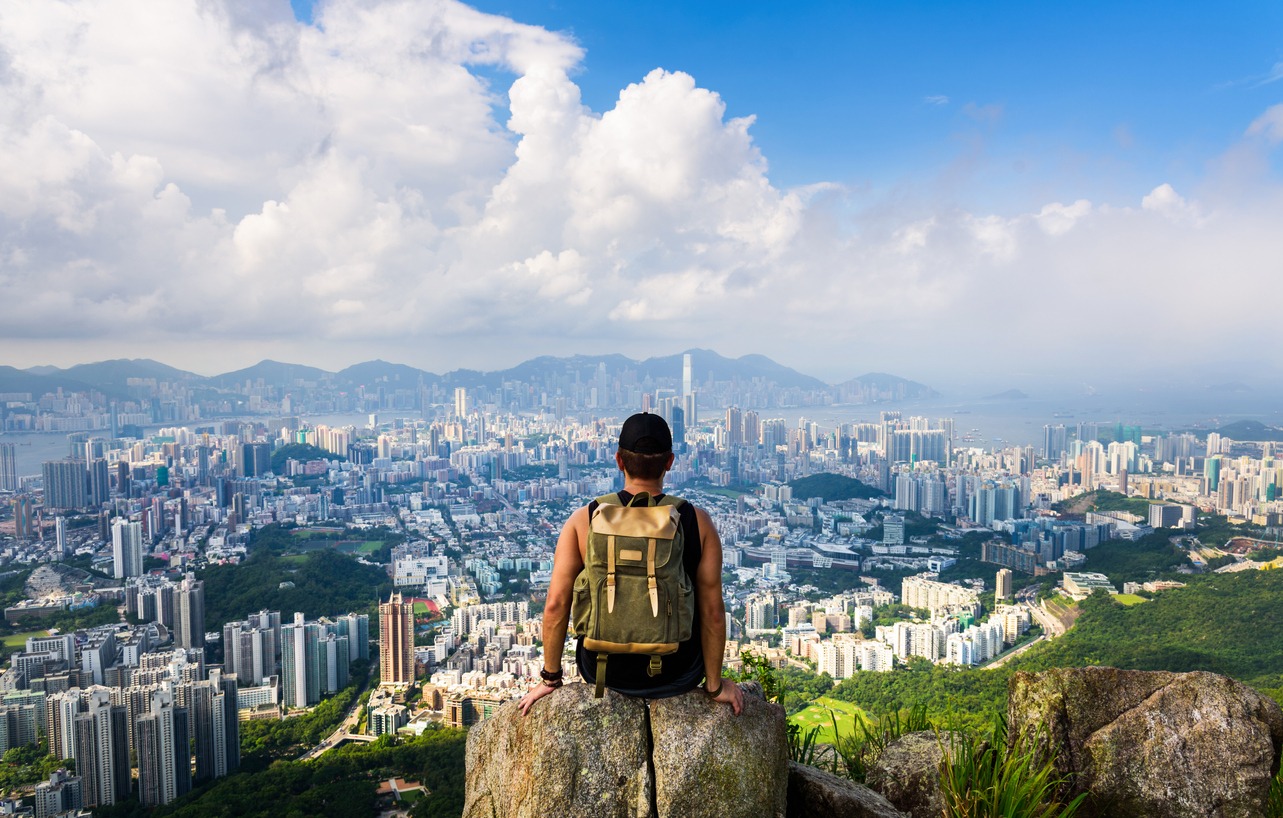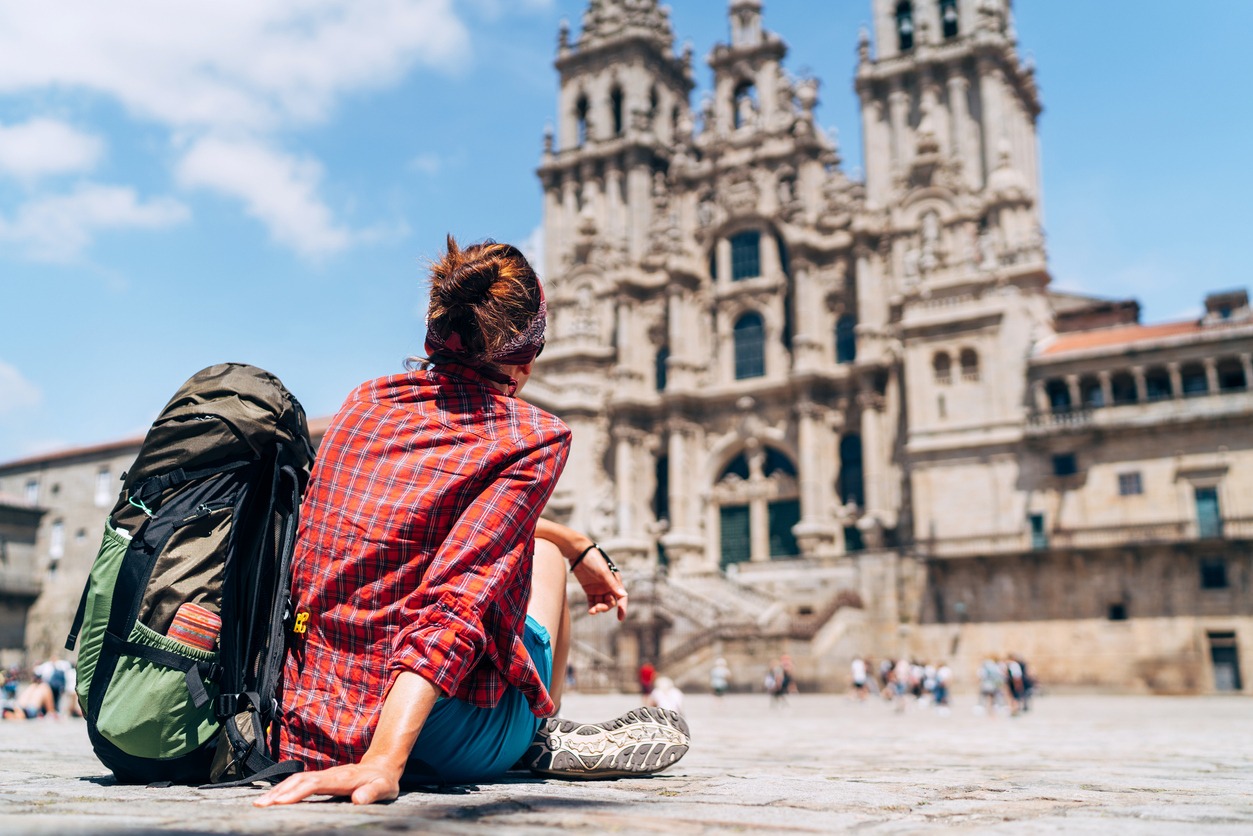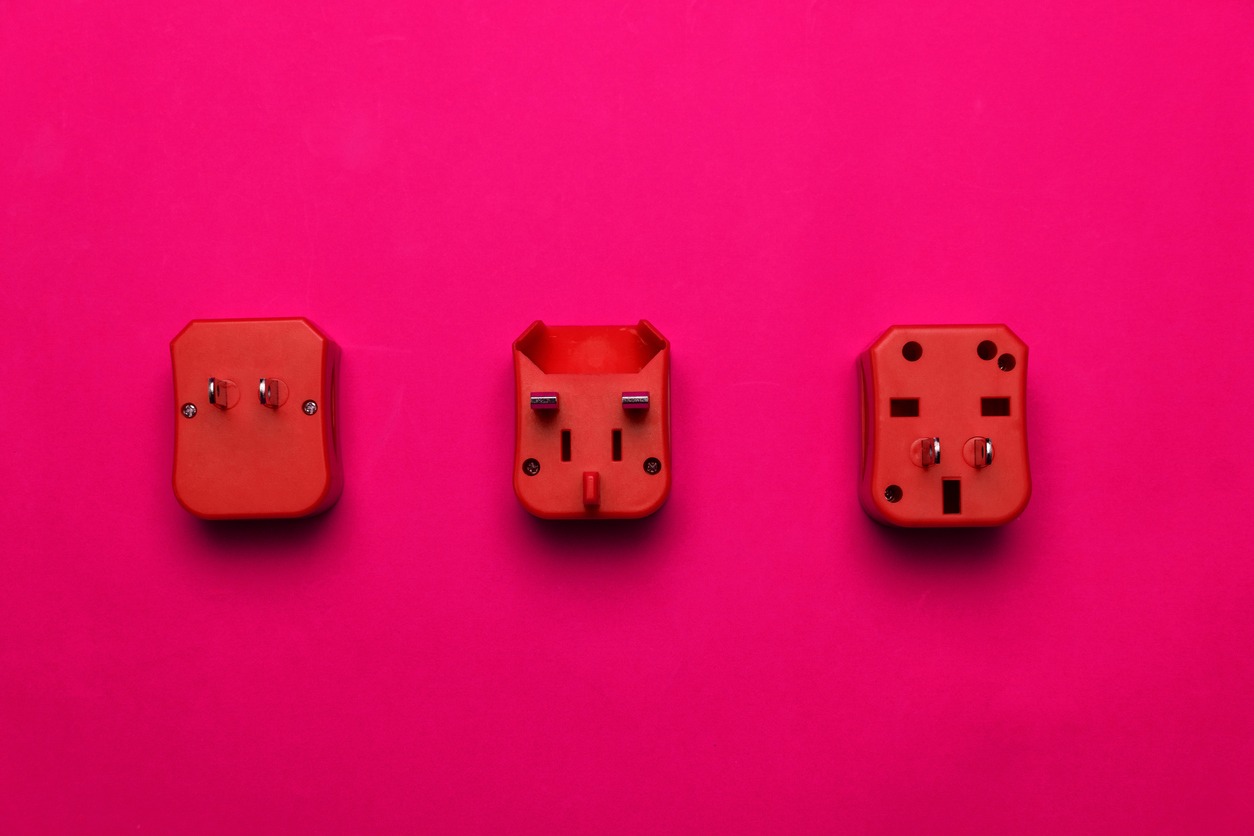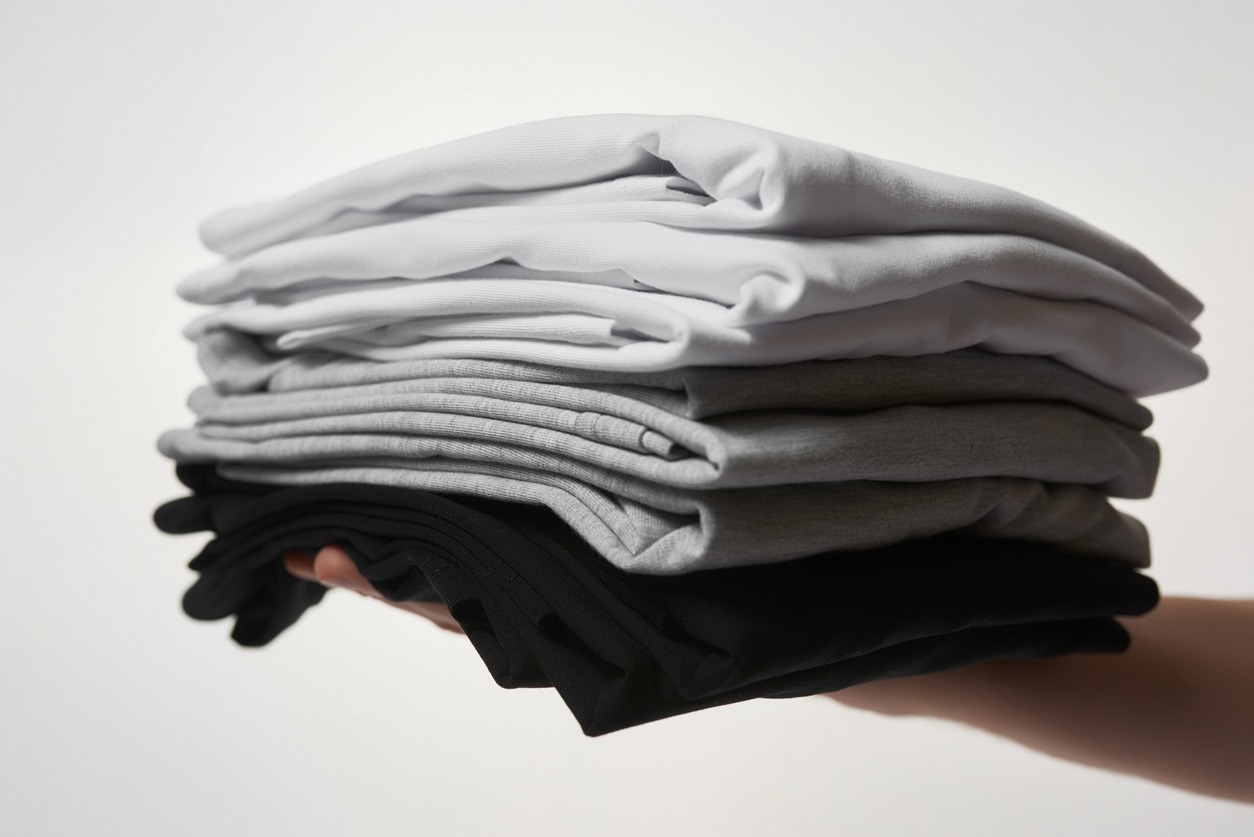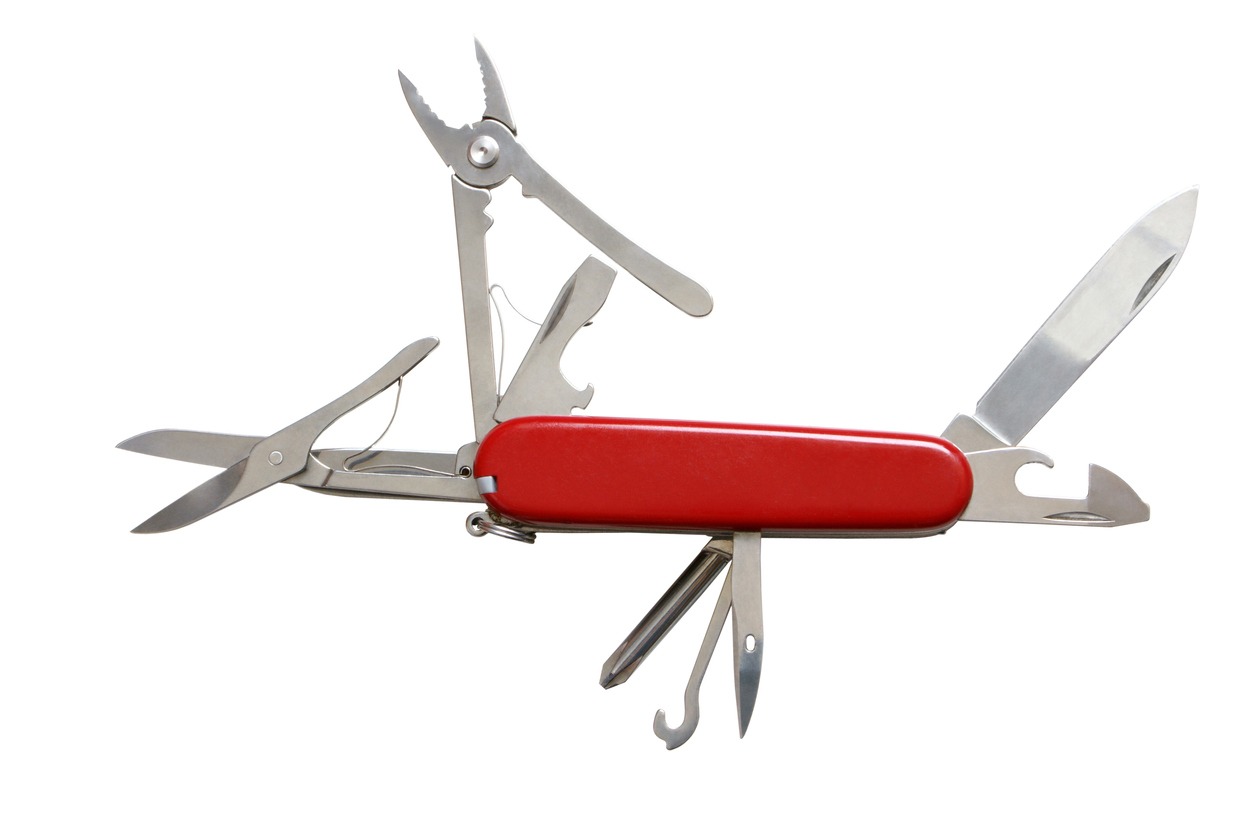Sometimes you wish to sleep under the stars, yet don’t want to travel long distances and hunt the most remote destinations. Well, there’s no need to! You can find many amazing spots in or quickly accessible from the city. From beautiful gardens, quaint museums, abandoned buildings, historic landmarks, hidden temples, and urban national parks, to active volcanoes, urban backpacking offers various adventures around every corner.
But while it’s easy to find a place to go, what’s hard is to plan what things to bring during your trip. Careful deliberation is a must, as what you decide to carry can make or break your outdoor pursuit. Ease your worries, though! To help out, we’ve listed all the essentials you need for urban backpacking, allowing you to successfully escape the hustle and bustle.
NORMAL URBAN BACKPACKING ESSENTIALS
1. Backpack
First and foremost, you’re not a backpacker without your backs. That’s why it’s the key item on this essentials list. Opt for a lightweight, appropriately sized backpack, depending on your trip. Sizes are typically displayed in liters, pertaining to the volume they can carry. To give you an insight into what size you need, check out the common sizes below:
- 15-30L: These backpacks are too small and are only ideal for quick weekend trips or if you’ve already mastered the art of packing light. Day packs and commuter bags usually fall in this range.
- 35-45L: Suitable not only for multi-day trips but also for adventures lasting for a few weeks or months if you know how to pack light. These backpacks are your best bet if you’re not backpacking in a location with one climate and don’t expect to encounter every type of weather. What’s great is that 45L is usually the maximum-sized carry-on allowed on most airlines, perfect if you want to save time and baggage fees.
- Carry-ons (around 40L): Carry-ons are the most ideal packs for urban backpacking. They provide better movement, without adding too much weight and stress on your back. These backpacks are your best bet if you’re staying in hostels and don’t need to carry bulky equipment or gear.
- 50-65L: Designed if you require extra space or if you’re among those backpackers who prefer bigger backpack sizes and can tolerate the extra weight.
- 70-120L: Packs in this size range are overkill for most urban travelers. Internal support frames usually already weigh a few kilos, which can easily slow and weigh you down, making the trip less enjoyable. Such backpacks are generally meant for longer camping and trekking expeditions.
Apart from the size, there are a few features that you should keep an eye on:
- Front-loading. Most of the backpacks you’ll see in the market today are top-loading, featuring a drawstring that you can use to close it at the top. These packs can be pretty inconvenient as they will require you to dig around deeply or remove everything on top just to get something from the bottom. Look for front-loading backpacks instead with a clamshell design. You can simply unzip and your items will be without instant reach.
- Lockable zippers. You’ll never know when opportunistic people may strike, so it’s best to keep your valuables safe. Backpacks with zippers with O-rings allow you to attach a wire lock or padlock to prevent theft.
- Laptop compartment: A separate cushioned compartment for your laptop is great for keeping your laptop secure. If you don’t bring one, you can always use this space for other items like travel journals, documents, books, and a whole lot more.
- Hip straps: Note that a backpack must be able to transfer 80% of its weight to your hips and lower body. If not, expect to experience sore shoulders and bad backs in the middle or after your trip. Hips traps help facilitate proper weight transfer, keeping your shoulders and back from strain and potential injuries.
- Ventilation: A sweaty back is unavoidable, but backpack manufacturers try to mitigate it by adding ventilation features like air form channels and tension-mesh suspension. Always check what ventilation features a pack offers before buying.
- Rain resistance: The last thing you want is water to leak into your bag during a sudden downpour. Opt for a backpack made of water-resistant material or includes a raincover.
2. Daypack
A daypack is the smaller cousin of your standard backpack. If you’re only going out for a quick hike or seeing the attraction in the city, it isn’t practical to lug your entire backpack around. Instead, all you need is the right daypack where you can stash a few things you’ll need, such as your water bottle, layers, wallet, and smartphone, while you leave the rest of your items in your backpack in the hostel. That way, there’s less weight on you and you can fully enjoy wherever you’re exploring.
3. Travel Towel
A lot of hostels don’t provide towels and even if they do, they may not be as clean. So, to stay dry, make sure to bring your travel towels. Just note that these aren’t your regular towels, which are relatively heavy and take up lots of space in your backpack.
Instead, use microfiber towels that are lightweight, take nearly no space, and dry unbelievably quickly, preventing them from moldy and smelly. You can even roll them up into tiny proportions and easily insert them in your backpack. While they may not be as comforting as cotton towels, it’s a compromise that many backpackers have to make.
4. Combination Padlocks
Combination padlocks are essential for a few reasons. First, as earlier mentioned, you need to lock your backpack to make it safe from thieves, especially in crowded urban centers. This will keep you somewhat at ease even if you’re walking in a sea of people.
Next, padlocks are important in hostels. Though most hostels provide lockers, they don’t usually provide padlocks, or should they do, they normally would charge a fee. With that, you need your own padlock to lock your valuables or avoid paying.
Lastly, if you’re a person who frequently loses room keys, you can instead use a good quality, combination padlock (more durable than little padlocks most hostels have) to lock your room – just remember not to forget the combination.
5. Packing Cubes
Now, to make packing a whole easier, try utilizing packing cubes. These travel tools seemingly act like little suitcases or cabinets where you can stash your items and keep them organized. Packing cubes also allow you to sort your things, such as clothes, electronic gadgets, or toiletries, making them easier to find in your backpack.
While most backpacks usually have their own compartments, they’re usually not enough, making packing cubes still handy. Don’t fret, as they are lightweight, compressible, and specifically designed for an easier organization so you can travel more efficiently. Plus, they come in different colors and sizes to suit your taste and fit your backpack.
6. Water Bottle
Bringing a water bottle for backpacking ensures that you stay hydrated while on the go. Moreover, it refrains you from spending a considerable sum of money to buy and buy disposable mineral water bottles.
With your own water bottle, all you need to do is refill your water bottle in the hostel or use water treatment options to get access to water from water sources on the trail. Just make sure to get a lightweight, sturdy, and ample-sized water bottle for your trip.
7. Sleep Mask and Earplugs
If you’re planning to travel by bus or by train, backpack cross-cities, and stay in hostels with tons of tourists, having a sleep mask and earplugs can help you sleep peacefully. Sometimes, you may be traveling until dawn, but there are times that you simply want to sleep. After all, backpacking is very exhausting and you need to refuel yourself for your next adventure. Once the fatigue starts to take its toll at night, your sleep mask and earplugs that the slightest noise and bright lights won’t disrupt your sleep, enabling you to drift off to sleep after all the explorations all day long.
8. Navigation Tools
Even if you’re going to visit a well-marked trail, it still pays to carry a map with your. The harder the trail, the more intricate the map you require. Of course, you should also have a compass, but make sure that you practice and learn ahead of time the basics of using a compass.
Meanwhile, your phone may have GPS, but technology isn’t reliable at times, so an old topographic map is still your best bet. To take advantage of your navigation tools, always keep yourself “found” by checking your position frequently and validating it on the map. Through that, you always know where you are, rendering it easier to know the next direction.
9. Flashlight
If you’re backpacking at night or in high-risk areas, unforeseen cases may occur, so you need to ensure that you can continue your journey amidst the dark. Having a flashlight is imperative, as it will not only help you find things and see the direction, but you can also use it to make a distress signal in an emergency situation. Some flashlight models even have special modes such as beacon and SOS intended for such situations.
10. Travel Documents
Your travel documents are the most important pieces of identification that you’ll carry and will serve as your permits to travel around the world. Organizing them before hitting the road helps ensure that you can cross a lot faster and without trouble.
Having a copy to take wherever you go and leaving another copy at your hostel is a smart move. Pickpockets are virtually anywhere, so it’s always best to have a backup with you.
To make sure you won’t miss anything, check out this backpacking documents checklist:
- A valid passport
- A laminated copy of your passport
- Flight, bus, and train tickets
- Driver’s License
- Address of your accommodation
- IDs
- Debit and Credit Cards
- Dollars
- Smaller bills for tips
- Money belt to securely keep your cash
- Insurance information, which includes your contact details and health information
ESSENTIAL ELECTRONICS FOR URBAN BACKPACKING
1. Travel Adapter
Packing a travel adapter is important if you’re backpacking internationally. There are various electrical sockets currently in use around the world. While travelers dream that someday nations will unite and implement one standard size, you need to bring a travel adapter until that happens. That way, you can make sure that your beloved electronic devices won’t run out of battery juice no matter what country you’re in.
2. Power Bank
You might think that you’ll not be needing a power bank until you get stranded in a city with a dead smartphone, tablet, laptop, GoPro, or other cameras. Choose the best capacity that suits your needs. If you only need your phone, 7,000-10,000 mAh are excellent options. Should you need to charge your camera or laptop, then a 20,000 mAh power bank is your best choice. The larger the capacity, the heavier and bulkier the power bank will usually be. Look for brands with premium lightweight, portable designs to save up on weight and space.
3. Laptop or Tablet
A laptop or tablet will certainly add some weight to your backpack, but it’s inevitable if you’re a digital nomad and backpacker who has the pleasure of working and traveling at the same time. Such devices will be very useful as they can do pretty much anything like searching for the best restaurants and nearby trails, listening to music, watching movies, reading books, and so much more. What you’ll love is most cities have free WiFi all around to keep you connected at all times, which is another good reason to carry your laptop or tablet in your urban backpacking adventures.
4. Camera and Lenses
Sure, your smartphone can take amazing photos, but the results aren’t at par with DSLR cameras yet. If you really want to take high-quality photos, keep fantastic memories of your travels, and share them on social media, take your camera and lenses with you.
A tradeoff, however, is the bulky size and weight. So, better assess first if you really need them. If you’re an average backpacker who simply wants to have fun, you won’t likely need to bring a DSLR camera and your smartphone will already suffice. If you write blogs or make vlogs, then bringing a DSLR camera is a must to get photos and videos that can impress your audience.
ESSENTIAL CLOTHES FOR URBAN BACKPACKING
1. Walking Shoes
Urban backpacking entails seeing old towns, visiting art museums, trekking easy, short trails, or traipsing a jungle. Truth to be told, you don’t need to be technical and wear hiking shoes for these activities. If the terrain is not too difficult and there are no long, arduous walks, a good pair of tennis or running shoes will already do the job. They are your dependable, versatile go-to shoes that will keep your feet comfortable in a multitude of situations. You might be lurking around an Italian city one day and the next you’re checking one of their pretty national parks – your walking shoes will be your best buddy.
2. Several Shirts
You should always bring more than one shirt for your urban backpacking trips, especially in locations with warmer climates where you can easily get sweaty. Packing 3 to 4 shirts will usually be enough. Don’t stress too much about them, as you can easily find them on the road. Make sure to bring at least a long-sleeved one for sun, insect, or cold protection.
To stay comfy, look for fabrics that are breathable, wick moisture quickly, and are easy to care for. Some good options are synthetic and wool shirts. They’re lightweight, dry fast, keep moisture away from your skin, as well as preserve body temperature, helping you stay warm and dry should conditions go awry.
3. Shorts and Pants
A pair of running shorts and a pair of lightweight, durable pants will normally do if you’re only backpacking on a weekend. If your trip is going over a week, then you may consider bringing another pair. You may opt for convertible hiking pants that turn into shorts with a simple zip-off for better versatility. Plus, they usually offer many functional features like sturdy construction, water-resistant capabilities, adjustable waistband, and few pockets for stashing small items.
4. Puffy Jacket or Rain Jacket
Bring a puffy jacket if you’re backpacking in colder climates. They will help you stay warm if you’re traveling in the early morning or on a chilly night. If you’re expecting to experience milder temperatures, go for a vest or one without a hoodie. Should be visiting locations with temperamental weather instead like countries in Southeast Asia, pack a rain jacket to stay dry during intense downpours. It’s something that most backpackers wish they never had to bring, but it’s a sheer necessity on many occasions.
5. Underwear
It can be quite difficult to find underwear that fits in certain parts of the world, so make sure to pack enough before you go backpacking. Leave the cotton ones at home and shoot for synthetic or wool undergarments instead. Regardless of whether you prefer briefs, boxers, or long underwear, see to it that they dry fast, don’t rub on your skin, offer good ventilation, have moisture-wicking capabilities, and are less constrictive. You should bring about 2-5 pairs, depending on your trip.
6. Socks
Like with underwear, forget about socks made of cotton. Opt for thinner, breathable, and easy-to-dry with antimicrobial properties. Pack two pairs, one dedicated for your traipsing during the day and one dedicated for sleep. Don’t miss out on washing and drying your socks in the evening to get them ready the next day. If you have extra space in your backpack, insert a third pair so you have a spare in case your socks don’t dry as quickly as expected.
7. Sunglasses
It’s vital to shield your eyes from harmful UV rays, especially during the summer when they are most intense. Add sunglasses to your packing list to protect your eyes from the sun and glare, keeping your eyes from getting dry and uncomfortable. It’s also a smart choice to get polarized lenses to eliminate reflections, make images look sharper, and boost visual clarity and comfort. Through that, you can better relish all the beautiful natural sceneries, man-made landmarks, and other attractions in front of you.
ESSENTIAL TOILETRIES FOR URBAN BACKPACKING
1. Shampoo & Body Wash
You may argue that most hostels or hotels already have them, so why should you still bring them? Well, don’t deny the quality of the shampoo and conditioner they provide isn’t equal to the ones you’re used to. With that, it’s better to stash some of your favorite necessities for your backpacking trip to stay refreshed.
You have to remember that it may not always be easy finding them at your destination. Bring only enough based on the length of your stay. Use travel-sized containers that will make it easier to pass through the airport and walk on the road.
2. Hand Sanitizer
Being outside means you may not always have access to water to wash your hands. A perfect solution to kick germs and bacteria from your hands and keep them clean is using a hand sanitizer. Make sure to clean your hands before cooking or eating meals and after going to the bathroom. Just drop a dime-size amount onto your palm, and rub your hand for about 20-30 seconds until it evaporates.
3. Sunscreen
Prolonged exposure to the sun, which is unavoidable when backpacking, can lead to painful sunburns and can increase the risks of skin cancer in the long run. To stay safe and avoid skin damage, bring and apply sunscreen, especially if you’re traveling in warmer climates, going out to the beach, or spending hours under the sun. Healthcare experts recommend that outdoor enthusiasts use sunscreen with a minimum of SPF 30 for the best protection.
4. No Brainers
There’s no explanation needed, but these items MUST BE on your packing list:
- Toothbrush
- Toothpaste
- Floss
- Toilet Paper
- Lip Balm
- Razor & Blades
- Tampons
- Soap
5. Insect Repellent
From ticks and midges to mosquitoes, various local insects can take away the fun of backpacking and put your health in peril. Ensure that you have a good insect repellent in your backpack. You’ll never know if the mosquito that bit you is carrying malaria, Dengue fever, Zika, or West Nile virus, malaria, so it’s best to always stay protected. If you’re traveling in hot spots, wearing a long-sleeve shirt and a head net may even be necessary to boost your protection from these pesky insects.
6. Mini First Aid Kit
Even if you’re just taking a short hike or an easy trail, accidents, such as cutting yourself, breaking a limb, or getting bitten by snakes, can happen. Thus, you must always prepare for the worst. Having a first aid kit can greatly help treat ailments, minimize the severity of the injury, and prevent infection. The catch is that first aid kits are usually bulky and add a little bit of extra weight. With that, you may simply opt for mini versions, which are best suited for backpacking.
7. Basic Medication
Carrying medication while backpacking is a smart move for many good reasons. For example, you may experience stomach or headache issues, which can easily ruin your day. If you’re a solo backpacker and have food poisoning, chances are you’ll not have enough juice to buy necessary medicines you need, making your medication kit a lifesaver. Not to mention that you can also face other conditions like heartburn, diarrhea, indigestion, and acidity. Always go for caplets instead of liquid, which can leak, spill, and damage other things in your backpack.
8. Toiletry Bag
To keep all your toiletries and medication organized, you must get a toiletry bag. Having one keeps all your items in one place, which is extremely helpful as you won’t find yourself experiencing difficulties finding a little caplet of paracetamol or your lip balm inside your huge backpack. Plus, it’s also handy if you’re in a hostel as you can easily grab your toiletry bag before dashing to the shared bathroom.
ADVENTURE CHECKLIST FOR URBAN BACKPACKING
If you’re not an average backpacker and instead love to chase more adventures in locations near the city, then you know that you’ll be carrying more gear.
To get you covered and ensure that you enjoy your epic hikes and other outdoor pursuits, check out this adventure checklist for urban backpacking.
Note that you may not be needing all of them. Just re-assess what you actually require for your trip and planned activities.
- Multi-tool: A highly versatile companion that contains every tool you need for any backpacking adventure. You can use it for nearly everything, such as preparing food, opening bottles and cans, repairing broken gear, and so much more.
- Shelter: Depending on the climate, length of your stay, comfort level, and your preference, you may choose between bringing a tent, hammock, bivy sacks, or tarp.
- Sleeping bag and sleeping pad: If you’re backpacking in the Alps, a sleeping bag and a sleeping pad are a must to keep you warm and help you sleep properly amidst the cold weather.
- Pocket blanket: A lightweight, super compact, and waterproof power blanket is an excellent addition to your backpacking checklist. Aside from shielding you from the cold, it can also double up as a picnic blanket or emergency poncho.
- Backpacking stove: Backpacking doesn’t mean you need to live on dry, uncooked foods. Carry the right backpacking stove so you can enjoy a warm cup of coffee in the morning or a warm, hearty meal after a day of exploration. After all, you need good, delicious food to stay fueled on your next adventures.
Takeaway
Urban backpacking doesn’t have to be a tricky endeavor when it comes to determining what essential items to bring. Use this list to give you a glimpse of what you should be carrying and anticipate the conditions of the place you’re visiting. Know that this hobby is trial-and-error. The more adventures you have, the more you’ll know what works for you, and the better you’ll be at packing your items for your trips. Stay safe and always have fun!
